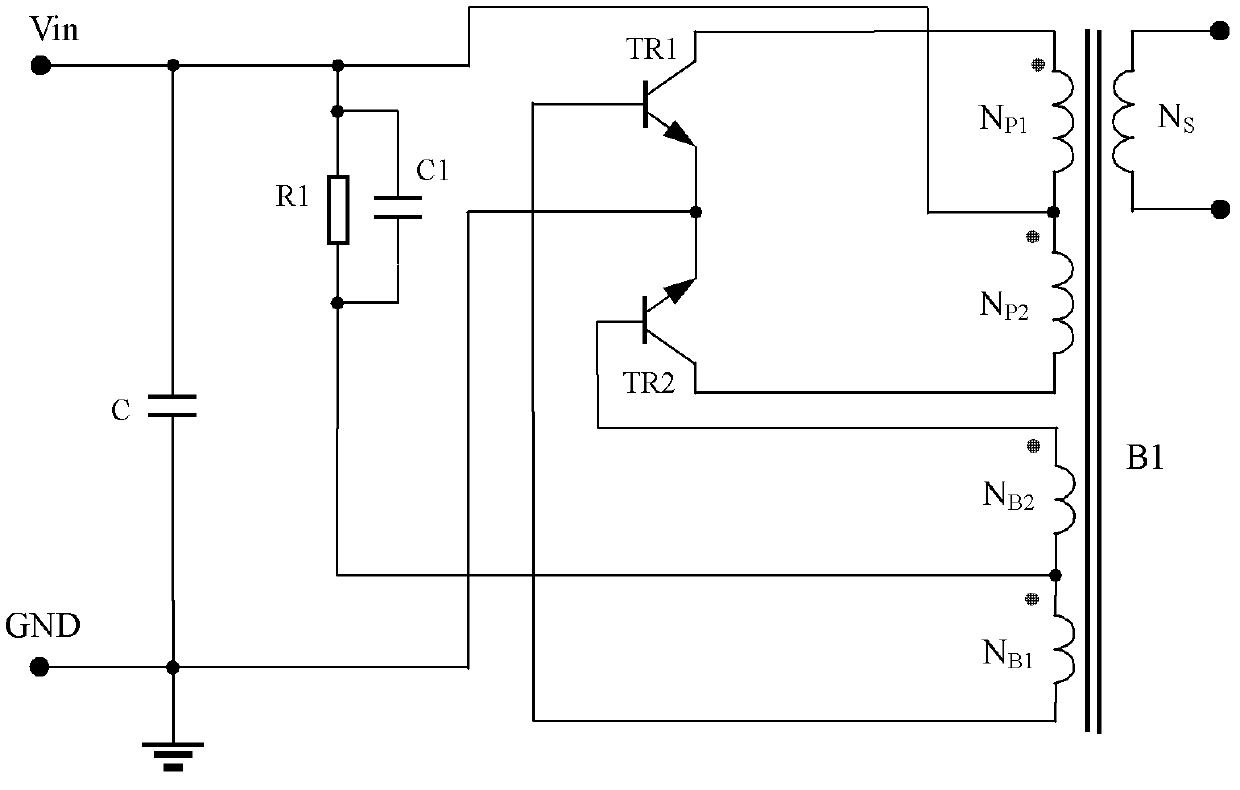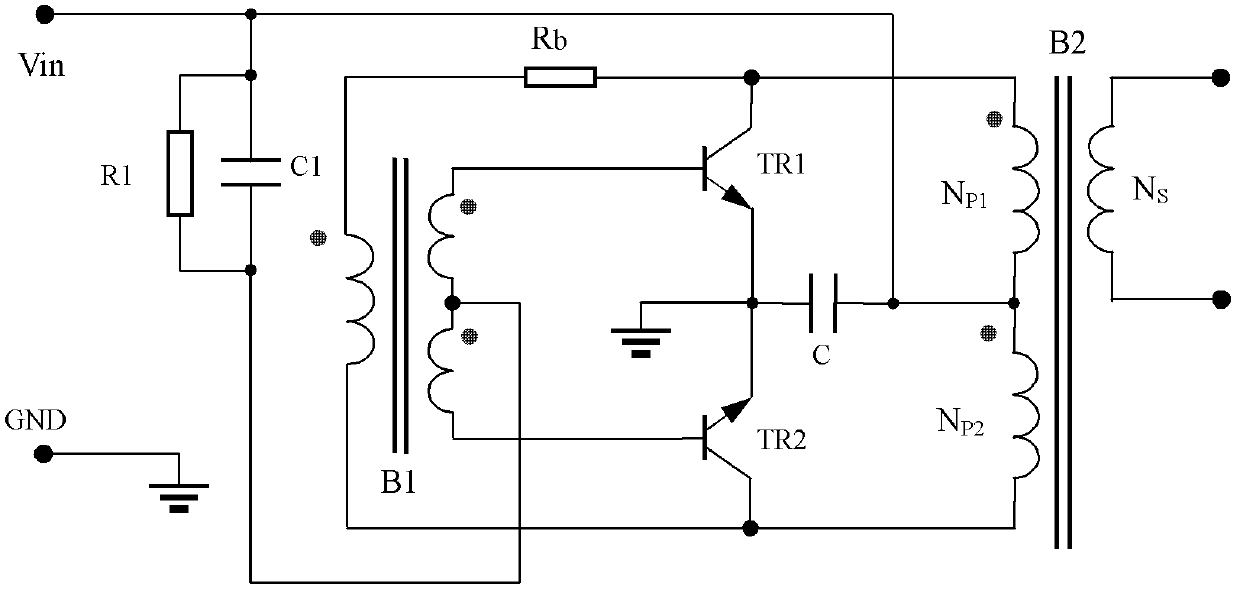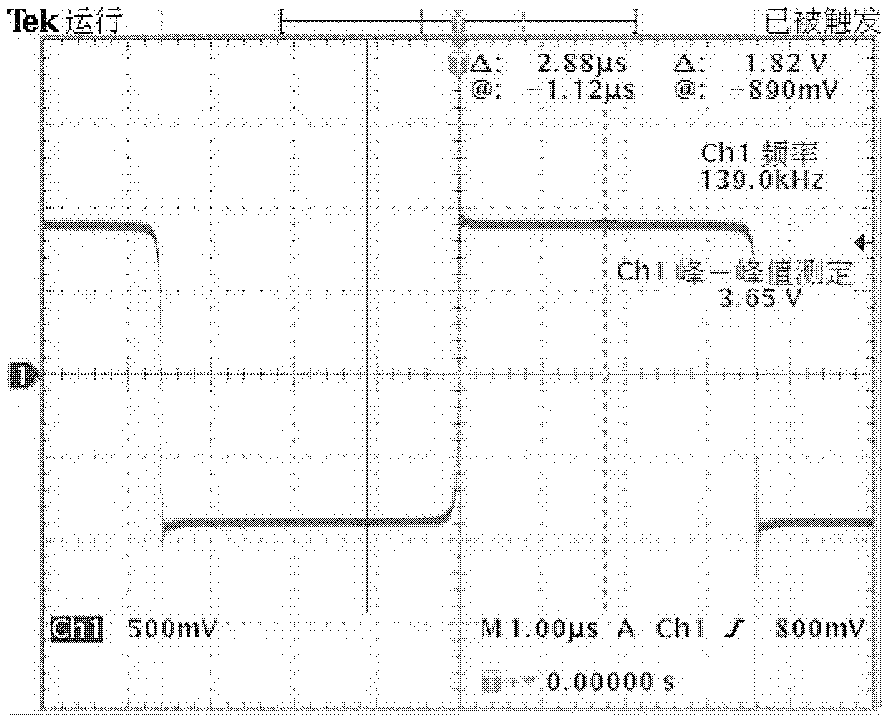Self-excitation push-pull type converter
A self-excited push-pull and converter technology, applied in the direction of transformers, fixed transformers, transformer/inductor cores, etc., can solve the problems of small transformer B1 that cannot be processed, the conversion efficiency is reduced, and the line sequence is damaged, so as to achieve single-piece production The effect of shortening working hours, improving winding efficiency and increasing working frequency
- Summary
- Abstract
- Description
- Claims
- Application Information
AI Technical Summary
Problems solved by technology
Method used
Image
Examples
Embodiment 1
[0124] Figure 9-1 to Figure 9-4 It is the magnetic core used by the transformer in the self-excited push-pull converter of the first embodiment of the present invention. There is a small part of the magnetic core with a smaller cross-sectional area than the magnetic core in the prior art, but the length of the part is very short; correspondingly, for clarity To best exhibit the effect of this embodiment, the cross-sectional area of the main portion is the same as that of the magnetic core in the prior art.
[0125] The ratio of the cross-sectional area of the main part to the local cross-sectional area, which is the reciprocal of the percentage in the technical solution, is recorded as a constant k, and the reciprocal is taken according to the previous technical solution below 80% and above 4%, that is, 1.25 times to 25 times , Figure 5 Shown is the magnetic ring type magnetic core of prior art, and its cross-sectional area is equal everywhere, so, according to existing...
Embodiment 2
[0193] The transformer used in the self-excited push-pull converter of the second embodiment of the present invention is slightly different from that of the first embodiment. In the first embodiment, the core cross-sectional area of the main part is the same as that of the prior art, while the local cross-sectional area ratio The cross-sectional area of the prior art is small, and their ratio is 1 / k. In order to fully demonstrate the effect of the present embodiment, in the transformer magnetic core that the circuit of the second embodiment of the present invention adopts, the local cross-sectional area is equal to the cross-sectional area of the prior art, that is, the cross-sectional area of the main part is the cross-sectional area of the prior art. k times.
[0194] Figure 11-1 , 11-2 , 11-3 are the front view, side view, and top view of the magnetic core used for comparison with the magnetic core of the second embodiment of the present invention respectively ...
Embodiment 3
[0227] Figure 15-1 to Figure 15-4 The transformer core used in the self-excited push-pull converter of the third embodiment of the present invention, Figure 15-1 It is the front view of the transformer magnetic core used in the third embodiment of the present invention; Figure 15-2 It is a side view of the transformer magnetic core used in the third embodiment of the present invention; Figure 15-3 It is a top view of the transformer core used in the third embodiment of the present invention; Figure 15-4 It is a three-dimensional view of the transformer magnetic core used in the third embodiment of the present invention; there is also a small part 53 and a main part 52 with a small cross-sectional area of the magnetic core, but the length of the part is very short. The working principle is the same as the working principle in the above-mentioned summary of the invention and the working principles of Embodiment 1 and Embodiment 2, and will not be repeated here.
PUM
| Property | Measurement | Unit |
|---|---|---|
| diameter | aaaaa | aaaaa |
| area | aaaaa | aaaaa |
Abstract
Description
Claims
Application Information
 Login to View More
Login to View More - R&D
- Intellectual Property
- Life Sciences
- Materials
- Tech Scout
- Unparalleled Data Quality
- Higher Quality Content
- 60% Fewer Hallucinations
Browse by: Latest US Patents, China's latest patents, Technical Efficacy Thesaurus, Application Domain, Technology Topic, Popular Technical Reports.
© 2025 PatSnap. All rights reserved.Legal|Privacy policy|Modern Slavery Act Transparency Statement|Sitemap|About US| Contact US: help@patsnap.com



